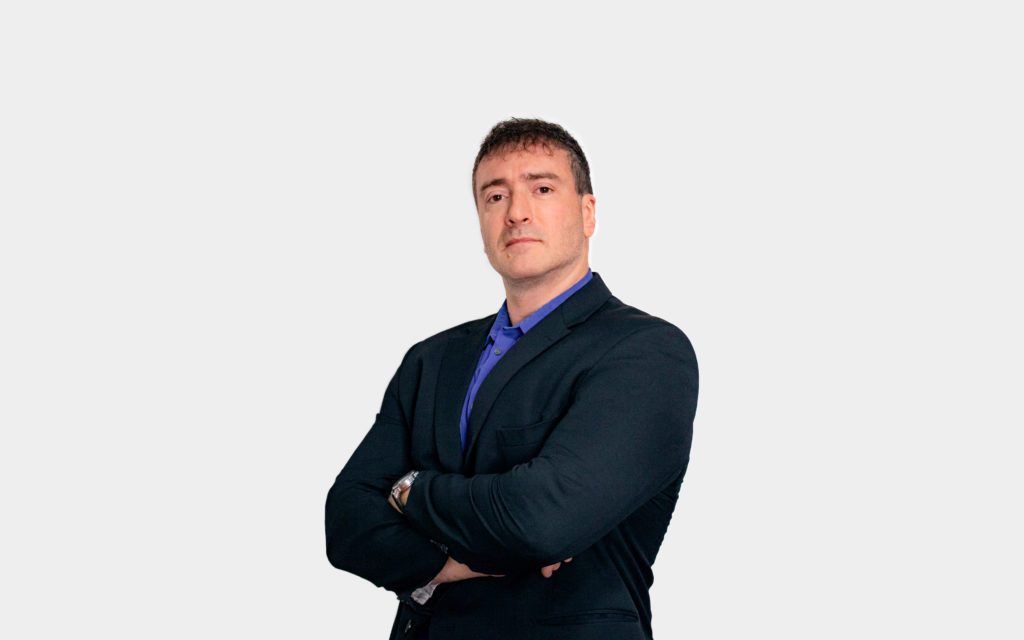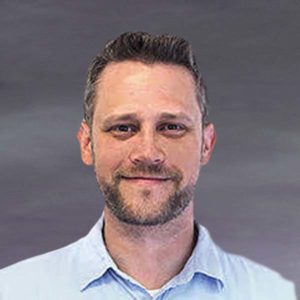

For Marco DeMello, CEO of mobile app security company PSafe, cybersecurity is a way of life. He has more than 20 years of experience protecting desktop and mobile devices from threats, and holds 10 software patents. Before cofounding PSafe in 2010, he spent 15 years at Microsoft and was responsible for a variety of projects including the integration of the company’s Hotmail acquisition, restructuring the entire Windows security infrastructure and developing Microsoft’s Exchange Server 2007.
PSafe’s dfndr security flagship app solution has been downloaded more than 130 million times, delivers security protection and a mobile performance boost to Android devices and has been rated by AV-TEST as one of the best Android security products in the world.
DeMello spoke with Chief Executive about the things CEOs need to know about cybersecurity and mobile devices, where the biggest threats are moving forward and how he’s managed growth at PSafe.
Why CEOs should be focusing on mobile cybersecurity measures
It’s fallacy that mobile devices are safer than laptops or desktops. That’s a big misconception. So right off the bat, I think that organizations should be aware that mobile devices are as vulnerable, if not more vulnerable, than desktops and they are a bigger threat.
They are a bigger attack vector, a bigger target. Why? Because people live 24/7 plugged into their phones. The first thing people do when they wake up is check their phones, last thing they do before you go to bed is check their phones and their entire data for their whole lives, basically all contacts, personal and business, usually share one single device. And so this co-mingling of your business contacts, your business data, your personal contacts and your personal data and your personal life creates a perfect storm environment for hackers to attack on corporations through the cellphone of their executives, their information workers and whatnot.
And so, I would say it’s a primary attack vector these days for data leaks and for network penetrations and/or compromises institutions. It’s people’s or information workers’ or executives’ cellphones.
The biggest threat in cybersecurity moving forward
For us, no question that the weaponization of artificial intelligence (AI) is the biggest threat we see today. There is war of algorithms happening. We are in it, we are fighting it every day. This is the biggest threat, in many ways, that modern civilization is facing, even more than business leaders or individual consumers. I think there’s a serious threat that is looming and it’s already happening in many ways.
You see through all this debate that’s having about what transpired in 2016 election, what’s going to happen in this year’s election and then you put that into perspective and you take those optics into the private sector and business world. You can imagine what’s being done to steal data, to break through corporate barriers and engage in corporate espionage, how much damage is being done, and is being caused by weaponization of AI, by creating incredibly smart and smarter bots that eventually convince people to fork over their data so they can then penetrate the networks and steal data.
So this weaponization of AI is the most concerning and the gravest trend we see, and it materializes on any platform. It doesn’t matter what the operating system is, it doesn’t matter what the hardware is, they are present in every one of the platforms and OS’s out there and growing.
“this weaponization of AI is the most concerning and the gravest trend we see, and it materializes on any platform.”
On how he’s handled growth at PSafe
We focused a lot on the hiring in the company, I think the culture, the quality of the talent and the type of people, the DNA that are brought into the business since the beginning has been one of my top priorities.
I believe fundamentally that a brilliant company is a collection of brilliant people, and you need to give them space to do their best work. And when you hire brilliant people, they hire other brilliant people and if you hire in a hurry, you’ll end up regretting it, no question. So focus on the quality of the recruiting and then training these people, training the team which are all my partners, they’re all shareholders, a very key element of any successful startup is splitting the pie and sharing the cake, if you will.
And also be flexible about where to build the offices. We are a global company with four offices in two continents, and we’re able to build the capability of managing the teams connected through video conferencing and hiring the right talent in the right place to grow the business successfully and not so concerned about whether having everybody in the same roof is more important. All those were key factors in bringing the talent up and building the team that today, like I said, spans two countries, two continents, four offices and servers see over 130 million users.
On managing teams in multiple offices in San Francisco and in Rio de Janeiro, Brazil
You need to make it your priority right? You can’t care about cultures at certain offices on Mondays and Wednesdays. You do this 24/7, every single day and I make it my priority to be on all those four offices very frequently. At least once a month, I’ll be in every one of those offices and fly around if necessary, as much as necessary, to meet with people face-to-face.
We do have, as a matter of practice and priority and rule of the company, not only direct levels one-on-ones or skip level one-on-ones to understand how is the team, how is the culture, how people perceive their work environment and the company they work for. We emphasize in leaders that they need to be qualified to be leaders. Great engineers do not always make great leaders. You need to understand the difference between the two and be able to put people in leadership positions that are qualified to be leaders and the key, the defining aspect of a great leader to me is ownership and transparency. You have to have both.
If you can’t show ownership to your team and be transparent about the good, the bad, the ugly and manage through the good, the bad and the ugly, they will over time cease to respect or follow you. The people respect people that you bring them value, make them better, challenge them, but at the same time are always on the right side of being transparent, of being direct, of being very honest with them. That’s such an important trait that people look for in leaders today and it’s something you need to emphasize—they need to make it clear that making mistakes, it’s not a bad thing. We’re all humans. It’s how you own up to it and how you deal with it and correct it that matters.
On how his leadership style has evolved over the years
It has evolved quite a bit, I would say, and I learned a ton during my tenure at Microsoft, the 15 years that I worked there. All the way from having done the acquisition and building up Hotmail to the complete refactor of Windows Security to later then working on the exchange server and communications platforms on Microsoft. All that taught me different degrees and varying scales of teams, of challenges and of culture. And in many ways, that helped me understand my own flaws as a manager and as a leader, and as the teams grew larger and larger I had to learn how to scale myself as a leader in my management and it’s very natural.
I came from an engineering background, a technical background. So it’s very, very natural for engineers as they grow into leadership positions, if they do go that route, that they tend to be much more micromanagers than necessary. You tend to worry about every single little detail and you want everything to be perfect and you care a lot about that and that can get into people’s nerves very quickly. So I understood, very early on, I got a lot of feedback on that and Microsoft had a system for this that helps a lot in terms of evaluations and peer feedback.
So early on I learned that I needed to give people their space, trust but verify but give them their space to execute and do their best and as you start to understand it, it is more important to find the right people, hire the right people, establish the right culture. And then set them loose to do their best work.
So this has been a learning curve for me over the years and really, fundamentally, I have learned that it’s much more important to focus on building that trust, building the right core values of what you care the most as a leader and what your teams and managers should care about the most as mid-level managers and as individual contributors, the necessarily details or aspects or a single feature or a given, even business objective. All that can be flushed out down the line but you know, having the right structure and the right relationship of communications, channels of communications, feedback loops, transparency, etc.
These are the things that leaders typically tend to fail on. They don’t pay sufficient attention to this and that’s what bites them in the back.




0

1:00 - 5:00 pm
Over 70% of Executives Surveyed Agree: Many Strategic Planning Efforts Lack Systematic Approach Tips for Enhancing Your Strategic Planning Process
Executives expressed frustration with their current strategic planning process. Issues include:
Steve Rutan and Denise Harrison have put together an afternoon workshop that will provide the tools you need to address these concerns. They have worked with hundreds of executives to develop a systematic approach that will enable your team to make better decisions during strategic planning. Steve and Denise will walk you through exercises for prioritizing your lists and steps that will reset and reinvigorate your process. This will be a hands-on workshop that will enable you to think about your business as you use the tools that are being presented. If you are ready for a Strategic Planning tune-up, select this workshop in your registration form. The additional fee of $695 will be added to your total.

2:00 - 5:00 pm
Female leaders face the same issues all leaders do, but they often face additional challenges too. In this peer session, we will facilitate a discussion of best practices and how to overcome common barriers to help women leaders be more effective within and outside their organizations.
Limited space available.

10:30 - 5:00 pm
General’s Retreat at Hermitage Golf Course
Sponsored by UBS
General’s Retreat, built in 1986 with architect Gary Roger Baird, has been voted the “Best Golf Course in Nashville” and is a “must play” when visiting the Nashville, Tennessee area. With the beautiful setting along the Cumberland River, golfers of all capabilities will thoroughly enjoy the golf, scenery and hospitality.
The golf outing fee includes transportation to and from the hotel, greens/cart fees, use of practice facilities, and boxed lunch. The bus will leave the hotel at 10:30 am for a noon shotgun start and return to the hotel after the cocktail reception following the completion of the round.